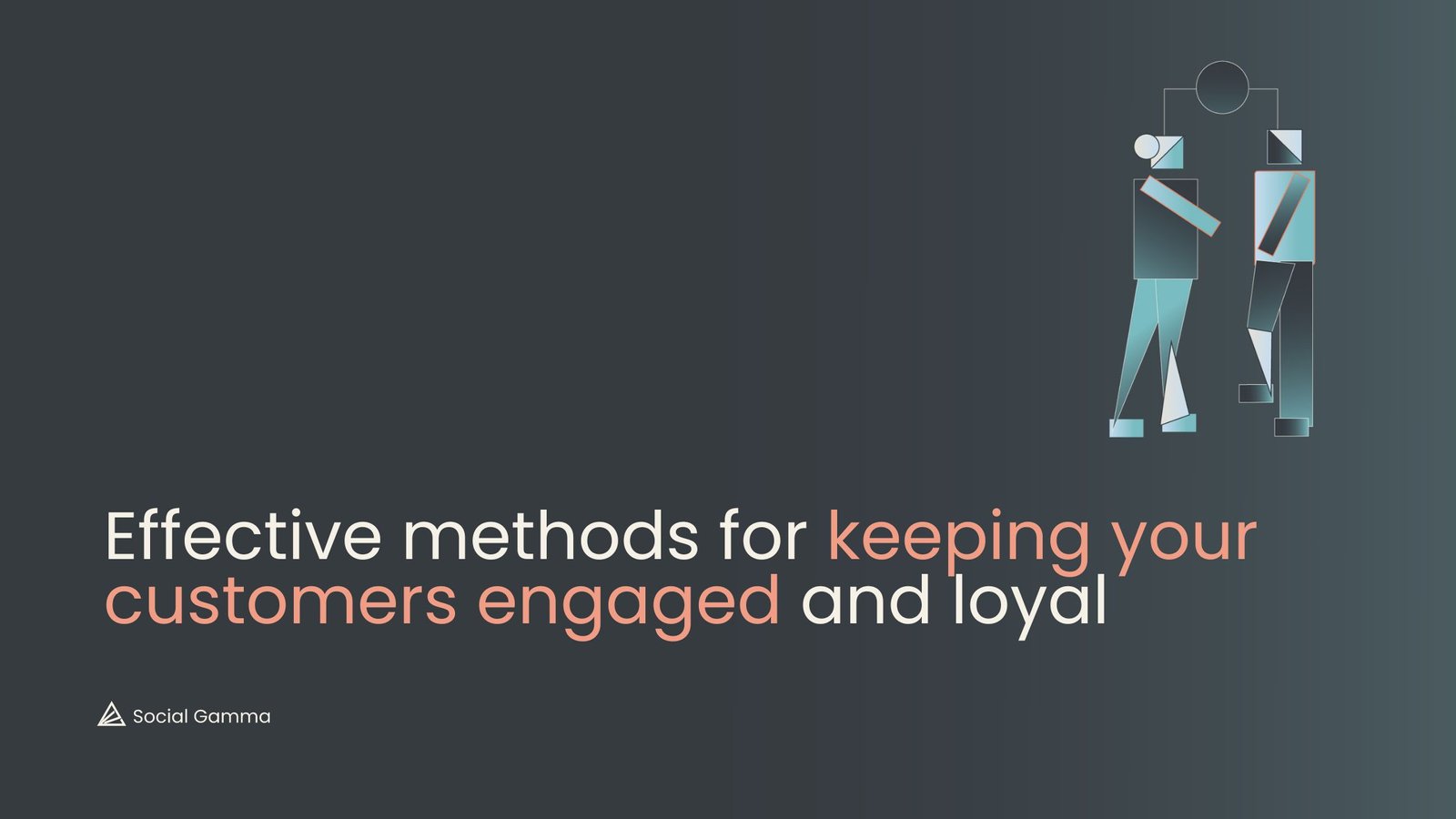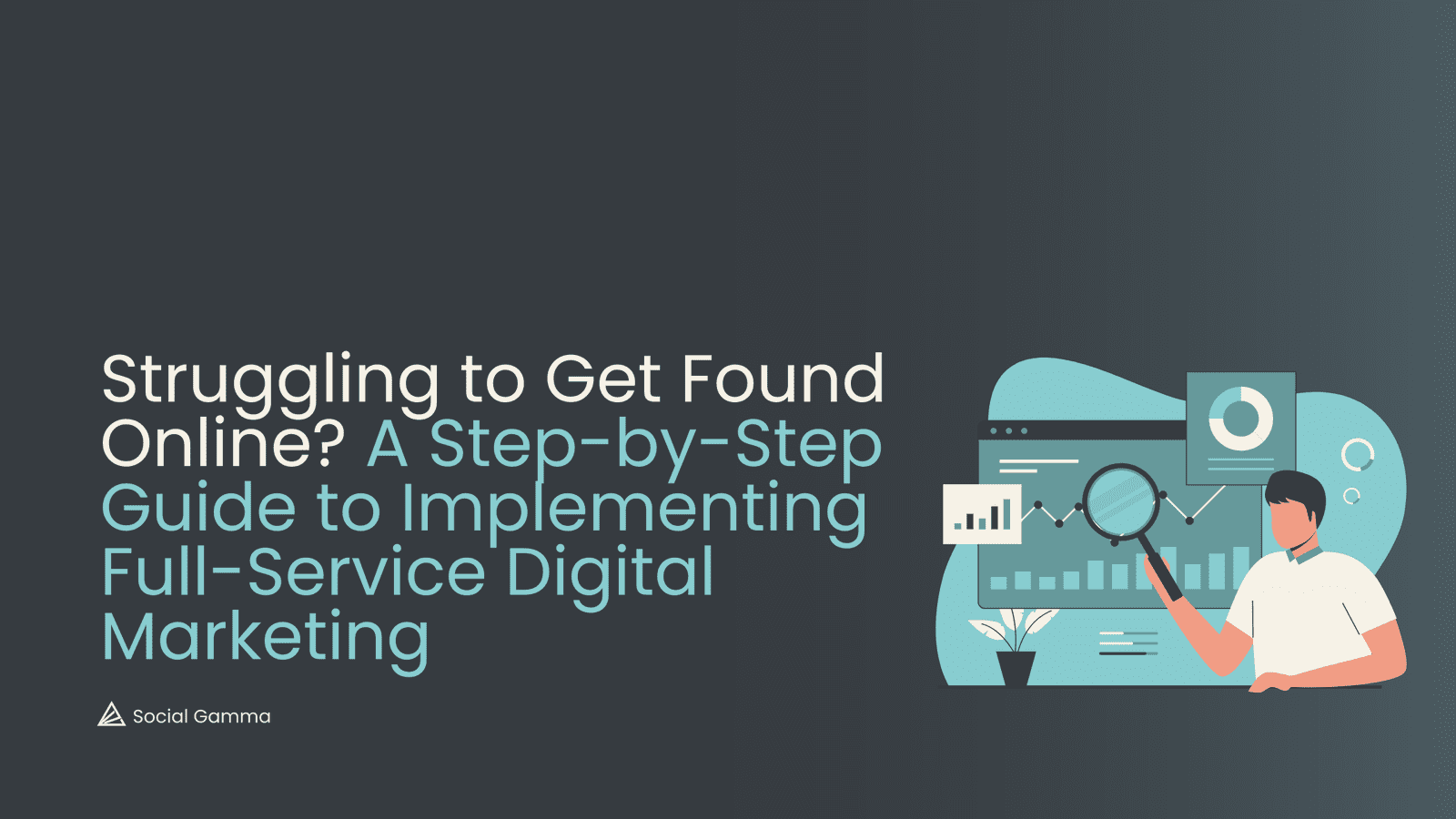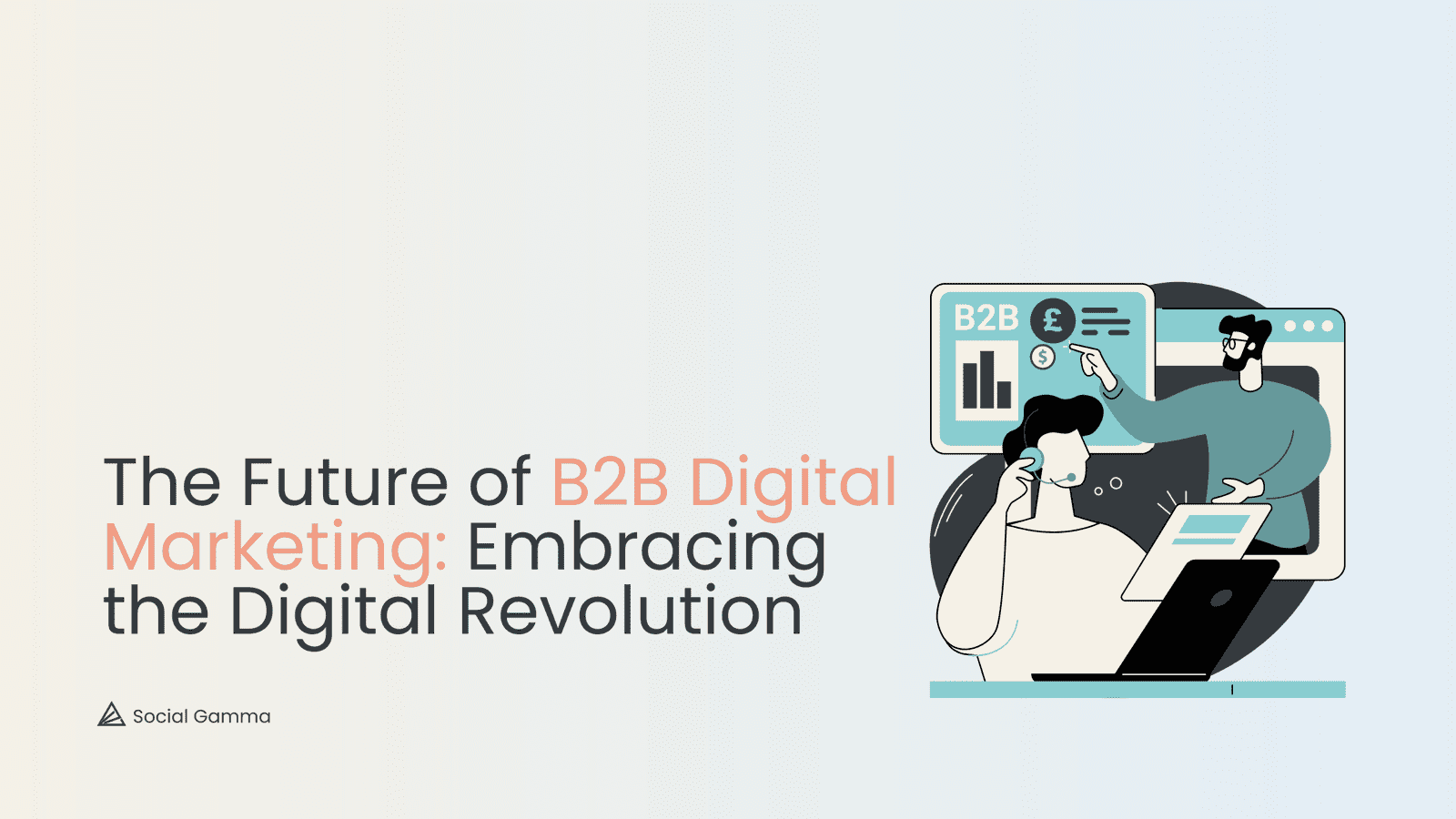Customer retention – The overused and quite often underappreciated buzzword mentioned in strategy meetings across the world each and every day. But how essential is it for long-term business success?
Just last year in 2022, analysts predicted that global spending on research and technology aimed at improving customer experience exceeded $600 billion.
With this more than likely to increase in comparison by the end of 2023, the battle to conquer customer retention worldwide is being fought night and day, and with a fairly substantial investment across the board.
For those managing a business, you’ll be aware that attracting new customers is only half the battle, but why all this fuss and investment over making sure customers remain loyal?
“Companies have a 60-70% chance of selling to an existing customer, compared to the fact that selling to new customers offers rates as low as 5%”
Altfeld Inc, 2023
As it turns out, all of this investment is paying dividends, with research indicating that the top 5 companies in many sectors are able to retain around 94% of their customers on average. It seems fairly nailed on that the real key to sustainable success lies in building an effective customer retention tailored specifically to your business and indeed your customers.
Building a loyal customer base is not only becoming more cost-effective than continuously acquiring new customers, but it is also a powerful driver of long-term growth. As it happens, a relatively small increase in customer retention of just 5% can boost company profits by over 25%.
So, how exactly do you go about building the ideal customer retention strategy? First, let’s explore the importance of customer retention, the benefits it brings, moving on to strategies for building customer loyalty that can be adapted into your business model.
Contents
- 1 The Importance of Customer Retention
- 2 Understanding Customer Loyalty
- 3 Benefits of Customer Retention for Long-Term Business Growth
- 4 How to Build Customer Loyalty
- 5 Strategies for Improving Customer Retention
- 6 The Role of Customer Service in Customer Retention
- 7 Tools and Technologies for Customer Retention
- 8 Measuring and Tracking Customer Retention
- 9 The Future of Customer Retention
The Importance of Customer Retention
Customer retention is the lifeblood of any business. As we know by now, it refers to the ability to keep existing customers engaged, satisfied, and loyal to your brand over time. While acquiring new customers is essential, retaining current customers is equally if not more important.
Its importance simply cannot be overstated, particularly due to the human nature and tendencies of customers when it comes to preferences. We all have our favorite brands for many different reasons, and quite often our loyalty to them is built up over a long period of time. The longer we remain loyal, the less likely we are to transition to another product or service.
“Over 3/4 of consumers have maintained a relationship spanning 10 years or more with at least one company”
HubSpot, 2023
Furthermore, loyal customers are more likely to refer your business to others, thus acting as valuable brand ambassadors. The vast majority – around 86% – of loyal, satisfied customers are willing to recommend a brand to their family or friends. They also tend to spend more over their lifetime, as they develop trust in a brand’s products or services.
Ultimately, customer retention is an essential marketing function to create a solid foundation for long-term business growth.
Understanding Customer Loyalty
Customer loyalty goes hand in hand with customer retention. Loyal customers in many cases consistently go out of their way to do business with a particular brand over their competitors. They have a strong emotional connection to your brand and are more likely to forgive any occasional shortcomings.
Building customer loyalty requires understanding and meeting their needs, expectations, and in many ways building an emotional following. As it happens, research shows that the lifetime value of customers who forge emotional bonds with a brand is 4x higher than an average customer.
This demonstrates the monetary impact of moving beyond transactional interactions to create personal, humanised connections. Customers invested in the relationship make repeat purchases and demonstrate heightened loyalty.
To cultivate customer loyalty, it is crucial to provide exceptional customer experiences at every touchpoint. This includes offering personalised interactions, delivering high-quality products or services, and being responsive to their feedback and concerns. By consistently exceeding customer expectations, businesses can create a strong emotional connection that keeps their customers coming back for more.
Benefits of Customer Retention for Long-Term Business Growth
Customer retention offers numerous benefits that contribute to long-term business growth. Firstly, it is a cost-effective strategy. Acquiring new customers can be up to five times more expensive than retaining existing ones. By focusing on retaining loyal customers, you can allocate your resources more efficiently and maximise your ROI.
Secondly, as we’ve discussed, customer retention leads to increased customer lifetime value. Loyal customers tend to make repeat purchases and spend more on each transaction. Their loyalty also extends to recommending a business to others, generating valuable word-of-mouth marketing. These factors result in higher revenue and profitability for your business.
In contrast, around 13% of customers who have a poor experience will then relay that negative interaction to 15 or more people in their social circles.
The fact of the matter is, customer retention enhances brand reputation and credibility. When customers consistently have positive experiences with your brand, they become advocates, promoting your business to their networks. This positive reputation not only attracts new customers but also helps establish your brand as a trusted industry leader.
How to Build Customer Loyalty
Simply providing quality products or services is no longer enough to stand out. Customers have endless options to choose from. The key ingredients for resonating with customers and developing meaningful, lasting relationships are nuanced.
Building customer loyalty requires a strategic approach. Here are some effective strategies to cultivate loyalty among your customer base:
Personalise the Customer Experience
Companies achieving at least double the return on their marketing investment dedicate 20% or more of their budget to personalisation.
Tailoring the customer experience to individual preferences and needs is essential. Utilise customer data and insights to provide personalised recommendations, targeted offers, and proactive support. By making customers feel valued and understood, you can create strong emotional connections that establish loyalty.
Focus on Exceptional Customer Service
73% of consumers are likely to take their business to a competitor after having multiple disappointing or unsatisfactory interactions with a company. In addition to this, 3 out of every 4 consumers go as far to say that having a negative experience ends up ruining their entire day.
Customer service plays a vital role in customer retention. Ensure that your customer service team is well-trained, knowledgeable, and responsive. Promptly address customer inquiries, complaints, and feedback to show that you genuinely care about their satisfaction. Going above and beyond to resolve issues demonstrates your commitment to customer success.
Offer Loyalty Programs and Incentives
Unsurprisingly, 77% of the UK population participates in loyalty programs.
Implementing loyalty programs can incentivise repeat purchases and strengthen customer loyalty. Reward customers for their continued support with exclusive discounts, VIP perks, or early access to new products. By providing tangible benefits, you create a sense of exclusivity and appreciation that keeps customers engaged and loyal.
Research is crucial as it allows businesses to assess into the preferences and behaviors of their loyalty program members. By analysing data related to these programs, companies can identify patterns, uncover customer motivations, and pinpoint which program features or rewards resonate the most with their target audience.
Foster Engagement and Community
37% of consumers are inclined to remain loyal to a brand instead of switching if they are part of a community associated with that brand.
Encouraging customer engagement by creating opportunities for interaction and dialogue gives you your desired ‘human’ element. This can be through social media platforms, online communities, or even in-person events. By establishing a sense of community, you not only deepen customer loyalty but also create a platform for customers to advocate for your brand.
Strategies for Improving Customer Retention
Improving customer retention requires a proactive and strategic approach. Here are some additional strategies to consider:
Conduct Regular Customer Surveys
Gathering feedback from your customers is crucial to understanding their needs and identifying areas for improvement. Regularly conduct customer surveys to gauge satisfaction levels, identify pain points, and gather insights on how to enhance the customer experience. Use this feedback to drive continuous improvement and address any potential issues proactively.
Implement a Customer Relationship Management (CRM) System
A CRM system can help centralise customer data, track interactions, and automate personalised communications. By leveraging a CRM system, you can streamline customer management processes, identify upselling or cross-selling opportunities, and deliver targeted marketing campaigns. This level of personalisation enhances customer satisfaction and increases retention rates.
Provide Ongoing Customer Education
Invest in educating your customers about your products or services. This can be through informative blog posts, video tutorials, or webinars. By empowering customers with knowledge and helping them maximise the value they derive from your offerings, you establish yourself as a trusted advisor and increase customer loyalty.
The Role of Customer Service in Customer Retention
As discussed earlier, customer service is a critical component of customer retention. It represents the frontline of your business, where customers interact directly with your brand. A positive customer service experience not only resolves immediate issues but also leaves a lasting impression on customers.
To optimise customer service for retention, consider the following:
Empower Your Customer Service Team
Provide your customer service team with the tools, resources, and authority they need to deliver exceptional service. Empower them to make decisions and resolve issues promptly without unnecessary escalations. This autonomy allows for faster resolution and demonstrates to customers that their concerns are taken seriously.
Offer Multichannel Support
Naturally, as human beings, customers have diverse preferences when it comes to communication channels. Ensure that your customer service team is equipped to handle inquiries and support requests through various channels such as phone, email, live chat, and social media. This accessibility enhances customer satisfaction and improves retention rates.
Continuously Train and Develop Your Customer Service Team
Invest in ongoing training and development for your customer service team. Equip them with the knowledge and skills to handle complex customer inquiries, provide personalised support, and effectively manage challenging situations – how you respond to the last one is crucial. Regular training sessions and performance evaluations ensure that your team is always delivering the highest level of service.
Tools and Technologies for Customer Retention
Today, we are quite literally spoilt with a choice of tools to assist in customer retention. These tools can help streamline processes, gather customer insights, and deliver personalised experiences. Here are some of the most essential tools to consider:
Customer Relationship Management (CRM) Software
As we mentioned, CRM software allows you to centralise customer data, track interactions, and manage customer relationships effectively. It provides insights into customer preferences, purchase history, and engagement levels, enabling you to deliver personalised experiences.
CRM software can also automate tasks, such as sending targeted emails or notifications, to nurture customer relationships.
Examples of these include Salesforce CRM, Zoho and HubSpot.
Customer Feedback and Survey Tools
While 74% of businesses claim to be data-centric, only 29% demonstrate proficiency in effectively implementing the insights they derive from data.
This however is changing dramatically with an increasing number of businesses spending big to collect data from their customers.
Collecting feedback is crucial for understanding customer satisfaction and identifying areas for improvement. Customer feedback and survey tools enable you to gather valuable insights through surveys, feedback forms, or social listening.
These tools help you stay in tune with customer needs and preferences, allowing you to make data-driven decisions to enhance the customer experience.
Examples include Hotjar, Userbrain and UserReport.
Marketing Automation Platforms
Marketing automation platforms enable you to deliver targeted and personalised marketing campaigns at scale. These platforms can automate customer segmentation, email marketing, social media management, and lead nurturing.
By leveraging marketing automation, you can consistently engage with customers, build brand loyalty, and drive repeat business.
Popular tools are Pardot, Eloqua and Marketo.
Measuring and Tracking Customer Retention
To gauge the effectiveness of your customer retention efforts, it is essential to measure and track key metrics. Here are some key metrics to consider:
Customer Retention Rate (CRR)
The customer retention rate measures the percentage of customers who remain loyal to your brand over a specific period.
It is calculated by dividing the number of customers at the end of a period by the number of customers at the beginning and multiplying by 100.
A high CRR indicates strong customer loyalty and successful retention strategies.
Churn Rate
The churn rate represents the percentage of customers who stop doing business with your company over a specific period.
It is calculated by dividing the number of lost customers by the number of customers at the beginning of the period and multiplying by 100.
For example, the average churn rate for IT Services and Software is 12% and 14% respectively.
Within the Software industry, a strong emphasis on enhancing customer experiences means certain businesses have achieved remarkably low churn rates, as low as 1.5%, resulting in an impressive customer retention rate of 98.5%.
Monitoring the churn rate helps identify potential issues and allows for targeted efforts to retain at-risk customers.
Customer Lifetime Value (CLV)
Customer lifetime value quantifies the total worth of a customer over their entire relationship with your business.
It considers factors such as average purchase value, purchase frequency, and customer longevity. A high CLV indicates that your retention efforts are successful in maximising customer value and driving long-term business growth.
The Future of Customer Retention
The subject of customer retention is undeniably crucial in today’s dynamic and competitive business landscape. As we’ve explored throughout this article, retaining customers offers a multitude of benefits, from increased profitability to brand loyalty and advocacy. It’s a strategy that transcends industries and resonates with businesses of all sizes, underscoring its universal significance.
Yet, as businesses navigate the intricacies of customer retention, there is one intriguing element that draws attention – the evolving nature of customer expectations.
It’s not merely enough to apply conventional retention techniques. Today’s customers are seeking experiences that go beyond loyalty points or discounts, they crave genuine connections and personalisation. Therefore, the future of customer retention lies not just in retaining customers, but in continued efforts to truly understand them, adapting to their ever-changing preferences, and creating experiences that resonate with their individuality.
The real differentiator lies in a business’s ability to translate customer data into empathetic, personalised, and meaningful interactions. It’s about establishing emotional connections that transcend transactional relationships. Is it the case that it’s not as much as a marketing strategy, but a philosophy?
Either way, one thing we can establish is that customer retention is more than a strategy – it’s a reflection of how well a business understands, respects, and connects with its customers where genuine human connections are more valuable than ever.
About us
At Social Gamma, our digital marketing solutions merge empowerment and expertise, driven by meticulous analysis and unrivaled insights that breathe life into your aspirations.
We embrace the art and science of digital marketing, combining data-driven strategies with human insights to create impactful campaigns that leave a lasting impression.
We’re big enough to achieve, but small enough to care.
Do you want to know more?
If you found this article interesting and useful, follow us on our social media channels to stay updated with our weekly digital marketing insights.
If you want to learn more about our services then contact us!


